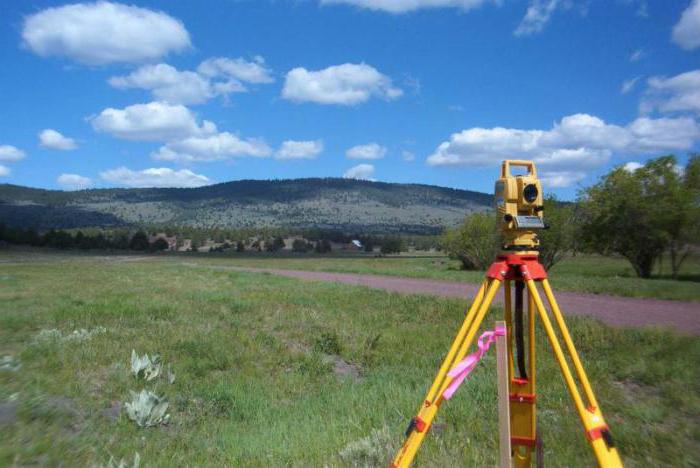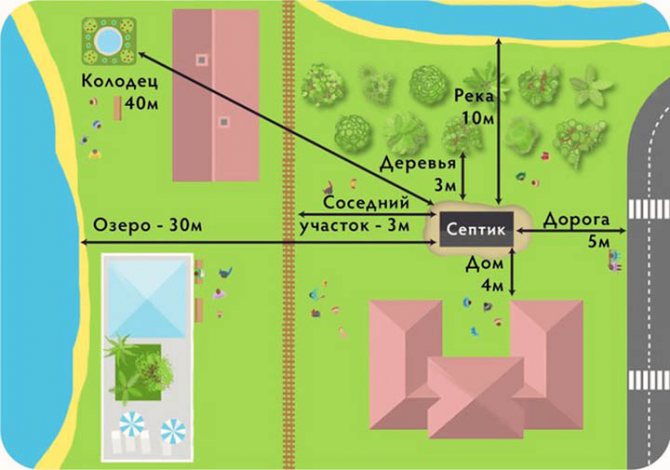Fence between neighboring plots
In a private house, on the right of ownership, a citizen can independently erect fences. Despite the existence of rights to the territory, during construction it is necessary to take into account provisions related to the extent to which fire safety standards, sanitary rules, and transparency of the structure are observed.
It is important to note that the provisions of the set of rules do not stipulate what height of the fence can be installed. At the same time, the previously applied SNiP reflected such issues. If we talk about transparency indicators, then the specified set of rules reflects points that have a recommendatory value. For this reason, citizens living in the neighborhood have the opportunity to change parameters depending on their discretion. If we consider fire and sanitary rules, it is worth noting that they are mandatory.
It is understood that violation of such provisions will be considered unlawful conduct. The citizen will have to bear responsibility for it. The set of rules in force in the private sector, for the most part, has a recommendatory value, however, taking them into account, the charters that are in force in gardening and horticulture, and dacha-type partnerships are formed. The listed acts are mandatory for execution by citizens living in this territory. This suggests that, according to the law, the provisions specified in the statutory documentation should be taken into account.
It is also necessary to take into account that the administration of a particular municipality, taking into account the set of rules, is vested with the authority to formulate its requirements regarding the construction of a fence at the dacha or in another place.
Installing a fence between neighbors in the private sector
The main purpose of a fence in a private house is to define the boundaries between neighbors’ plots and only then to protect the property. Therefore, it is necessary to take into account the interests of neighbors and the rules for installing a fence between plots, and not just your preferences.
Contradictions between neighbors can arise not only at the time of installation of a fence or fencing. They occur when the fence has already been in place for a long time. This may simply end in a quarrel between neighbors, or it may lead to the payment of a fine and the demolition of the fence. To prevent this from happening, you should adhere to existing recommendations and installation rules.
First of all, before installing the fence, you should carefully read all the regulatory documents. In particular, calculate the boundaries of land plots down to centimeters.
To ensure that possible disagreements are eliminated, it is recommended that you discuss the boundaries of private property with your neighbors in advance.
For reliability, it is best to sign an act on the boundaries of the site in SNT or individual housing construction.
If you cannot independently determine the boundaries of the site according to the rules, you should seek help from a surveyor. He will be guided not only by documents, but will also independently study the area, accurately measure the areas and issue a conclusion.
Example of a blind fence
You can act on its basis without fear that the construction of a fence is taking place outside the law and regulations.
However, it is no longer possible to erect a fence simply at will. First, you will need to apply for permission from the department of urban planning and architecture of the locality. This can cause new difficulties if there is a water supply or electrical communications system on the territory.
These recommendations should not be neglected, as well as other rules for installing a fence between neighbors in private houses. If neighbors complain and any violations are found, the fence may be dismantled.
Start of construction
When constructing a fence in the private sector, Russian standards must be observed. Often citizens are confident that construction work begins with the marking of the site, however, this point of view is erroneous. It is not possible to install a fence between adjacent plots between adjacent plots or houses. Compliance with the law is mandatory. In the village, norms must also be observed. Initially, you need to contact the authorized body and obtain permission to carry out construction work.
A certain sequence of actions is provided:
- The boundaries of the plots are agreed upon with the persons who have the rights of ownership of the neighboring plots. To do this, it is necessary to initially study the plans, including those for boundary and cadastral purposes. This is necessary in order to resolve the issue regarding the delimitation of plots.
- An agreement drawn up between neighbors is formed and signed. When a controversial situation arises regarding who should install a fence or who owns a specific territory, employees of a geodetic company need to be involved in the process. This citizen inspects, takes measurements and carries out planning. It takes into account the data reflected in the official documentation. If necessary, a photo is taken for further preparation of papers.
- The question is being resolved about what parameters the fence should have. Citizens must agree on the level of transparency of the building and its height. This applies to a situation where a decision has been made to erect a fence that exceeds in parameters what is reflected in the set of rules. Next, the owners of the plots sign an agreement or deeds.
- Official permission is being obtained. To do this, the citizen will need to contact the architecture department of the local municipality. A certain package of documentation should be collected, including: papers indicating the existence of rights to the allotment, documentation of cadastral and boundary values, the act through which the boundaries were agreed upon. We also need an act in which citizens agreed on their positions regarding what parameters the fence needs.
- Formation of an application. The document is addressed to the head of administration of a particular municipality. When the documentation has been reviewed by the authorized body, a permit is issued. It is worth considering that the procedure can be lengthy and take about 1 month.
Often citizens, when deciding on the height of a fence that can be erected between neighbors according to the law, are interested in whether it will be possible to do without going through the listed stages. From a theoretical point of view, it is possible. However, this is a violation of the law. Therefore, liability measures may be applied to a citizen. Difficulties can be expressed in several directions. In particular, neighbors have the right to appeal to the courts. This occurs in a situation where individuals do not agree with the established boundaries of plots.
ATTENTION !!! In addition, disagreements may concern the height of the fence and the coating used to construct it. At the same time, there is a high probability that the neighbor will win the lawsuit. If a fence is erected without obtaining permission, then the legislation considers such a situation as unauthorized construction.
For this reason, a citizen may be required to demolish it and also impose penalties. The value is about three to five minimum wages. In 2021, the amount of the fine ranges from 30 to 50 thousand rubles. Therefore, when erecting a fence, you need to take into account the requirements prescribed in legislative acts.
Stages of land surveying
In order to correctly and in accordance with the standards determine the distance from fence to fence, it is necessary to carry out the following work:
- Select an organization to carry out land surveying. Make an agreement with her.
- Prepare the necessary documents.
- A surveying company will survey the site.

- Determination of site boundaries, area, coordinates and other data.
- A boundary approval act is drawn up and signed. This document must have the signatures of the owners of the two plots and the head of the local administration.
- Drawing up a boundary plan. This may require additional documents from the local architecture authority.
- The completed boundary plan is submitted to the cadastral chamber for amendments to the relevant documents.
- Obtaining a new passport for a land plot.
Fence height
Previously, the provisions of SNiP No. 30-02-97 were applied, which reflected the recommended fence height. The limit value was set within one and a half meters. Currently, the provisions of the Code of Rules 53.13330.2011 are applied, however, this act does not reflect the maximum fence height parameters. For this reason, the height is regulated through an agreement formed between the owners of adjacent plots. A mandatory point is that the agreement must be in writing. This is necessary in order to avoid difficulties in the future.
ATTENTION !!! It is worth taking into account the requirements regarding the transparency of fences. In this case, attention should be paid to the provision of paragraph 6.2 of the Code of Rules, it recommends installing a mesh type fencing along the perimeter of the plots.
This applies to dacha and garden areas. However, there are exceptions to this rule. It lies in the fact that in case of agreement between neighbors, another type of fencing can be used, in particular, a solid fence. It can be made of corrugated sheets, stones or bricks and other materials. Citizens will need to formalize the agreement in writing and have it endorsed by a representative of the gardening partnership.
What to do if a neighbor has appropriated public land
However, the ban often does not prevent citizens from appropriating public land. When looking at judicial practice, you can come across a lot of conflicts that are based on the illegal use of common lands.
To solve a problem in the legal field, you must follow the following algorithm:
- Find the owner of the land.
- File an appeal to the land owner.
- Contact Rosreestr to bring the culprit to justice.
- Go to court.
It is believed that in a malicious situation it is possible to recover moral damages from the culprit. In practice, this is almost impossible. It will not be easy to prove moral suffering from the blocked area.
Finding the owner of the land
First of all, it is necessary to confirm that the neighbor is not the legal owner of this site. Perhaps the boundaries of his allotment are set in such a way that the disputed area belongs to his property.
In addition, the citizen had the full right to conclude a lease agreement with the district administration and lease the missing part of the plot for 49 years. Therefore, it is possible that he is using it legally.
To find out the identity of the owner you must:
- Receive an extract from the Unified State Register of Real Estate.
- Check the information against the development plan (the master development plan can be viewed at the local administration).
If the site is not registered in the cadastral register, and lease and use rights do not apply to it, then the owner is the local administration. In this case, the seizure is de facto.
This can be resolved by contacting the owner.
Contact the owner
After receiving documents about the actual seizure of a land plot, you must contact its owner. For example, a road may be owned by:
- HOA;
- local administration;
- in common shared ownership of the THC.
Information about the seizure is provided in writing addressed to the head of the housing cooperative or the head of the local government body. After which, they must take measures to bring the culprit to justice for the illegal seizure of land.
Contact Rosreestr
If the owner refuses or is in no hurry to bring the perpetrators to justice, citizens can also initiate the imposition of administrative punishment. To do this, you need to contact the territorial department of Rosreestr and report the unauthorized seizure of land.
Rosreestr is a government body that is authorized to independently bring land invaders to administrative responsibility.
Important! Contacting the police department regarding issues related to illegal seizure of land will not bring results. The police are not authorized to initiate administrative proceedings on these issues.
Let's go to court
In some cases, legal seizure of land is possible. This is an illegal registration of rights to common land.
For example, on this site there is the only access to the neighbor’s plot, and the culprit has drawn up land surveys or bought the land from the HOA. In this case, the dispute can only be resolved in court.
A citizen whose rights have been violated has the right to file an application for termination of ownership rights, amendments to the Unified State Register of Real Estate and the removal of obstacles to the use of the site.
When going to court, you must prove the following points:
- the land belongs to public territory (land management examination, analysis of cadastral plans of plots and master construction plans);
- actual boundaries do not correspond to official ones (land management examination).
The applicant must establish the following requirements in the claim:
- establish the boundaries of land plots;
- recognize the survey results as incorrect;
- recognize the transaction as invalid (if the rights to the plot arose on the basis of the purchase of common land from the THC);
- dismantle the fence (if there is a fence).
Fire type protection
It is important to note that SP 53.13330.2011 does not reflect the maximum distances intended to organize fire safety within the land plot. These rules relate to the distance at which buildings and structures should be located between areas of adjacent types. In addition, the minimum distance and materials from which the structure is made are specified. These values are represented by the following numbers: when non-flammable materials are used, for example, metal or concrete, the minimum distance is six meters.
When a wooden floor is used, which is prescribed with a special composition, the distance increases to eight meters. There must be at least ten meters between structures made of wood. These standards are developed for citizens in order to protect them and their buildings. For this reason, these standards must be observed most strictly.
Installation Rules
In order not to have to again and again apply to various authorities of the partnership or prove your case in court, you must remember the installation procedure:
- You need to establish the boundaries of your own and neighboring land plots in a gardening partnership. Structures must be built with the approval of neighbors, although if it is installed on the street side, then such approval is not required. Moreover, the height and material from which the building will be erected are determined by the owner independently;
- if a building is erected between two plots, the owner of the neighboring plot can partially pay for the construction;
- development of a project and plan, which indicates all the parameters of the fence indicating the material.
Upon completion of the project, all main points are discussed with the owners of neighboring plots, and do not forget to formalize all agreements in writing. You can discuss all issues at a general meeting of neighbors and interested parties.
Sanitary rules
In addition, sanitary standards are mandatory. This is due to the fact that they are aimed at ensuring the safety of humans and animals from various types of infections. For this reason, the code specifies maximum distances between plots. This applies to the location of the fence and buildings on the site. If we talk about residential buildings, the limit is three meters, for buildings intended for livestock - four meters.
The fence is erected 1 meter away from bushes and a couple of meters away from small trees. For a tall tree, the limit rises to 4 meters. It is worth noting that in a situation where a garage building or other building is located close to the house, you will need to take measurements for each building separately. For example, when there is a cattle pen next to the house, you need to maintain a distance of three meters for the house, and 4 meters for the specified building. During construction, you need to take into account the larger of the given values.
It is also important how residential and sanitary buildings are located. It is worth considering that you need to comply with such requirements not only for your own plot, but also for your neighbor’s. For example, for a shower or bath, for a toilet, you need to maintain a distance of 8 meters. A similar distance must be maintained relative to the compost pit.
When building a fence between adjacent plots, you need to take into account the rules prescribed in the Code.
Sanitary standards inside the site
The same document regulates sanitary distances between buildings for different purposes located on the same site. Their compliance is not monitored so closely, but it is better not to violate existing rules.
The location of all buildings on the site is measured from the external wall of the residential building. Recommended values are:
- to a septic tank or cesspool - more than 8 m;
- to the toilet, which is located on the street - 12 m and 20 m should separate the well or water supply well from the latrine;
- to a bathhouse or shower with an external drain - 8 m;
- to outbuildings - 12-15 m.

These standards must be observed not only within a single plot, but also when designing plots adjacent to it. If the bathhouse is located at a distance of 3 m from the fence, then the house on the neighboring site should be 5 m from this point. For the same reasons, you should not place the well close to the fence.






